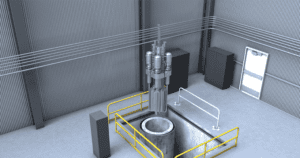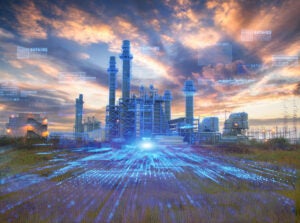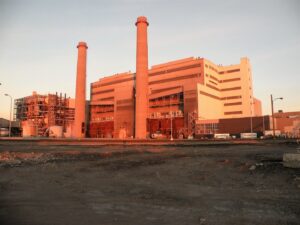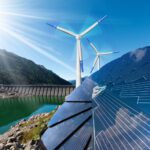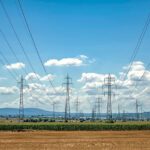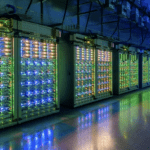
Here’s a fundamental truth: there is no AI without energy. And as the technology grows, its demand for energy, and carbon footprint, may never again be as small as it is today.
Against this backdrop, debates over which energy source should power AI miss the point. AI’s appetite for energy—relative to what the grid has available today—will demand every tool available. Even if AI growth projections overshoot, energy demand will increase at a scale the power sector hasn’t seen in a generation. The real test is whether we can scale fast enough while ensuring energy remains reliable and affordable for ratepayers while continuing to improve emissions intensity throughout our energy system.
Market participants are focused on how best to balance these considerations, and at a pace that will support America’s competitive advantages. Governments are also engaging. The U.S. will need new chip factories, new data centers, and, most critically, vast new sources of energy, along with the infrastructure to deliver where it’s needed. Recent reforms outlined in Winning the Race: America’s AI Action Plan aim to accelerate permitting and expedite infrastructure deployment, with the recognition that tomorrow’s energy system will look very different from the one we have today.
Bridging policy ambition with practical delivery requires companies capable of moving energy at scale, making infrastructure essential to the task. Enbridge sits at the center of North America’s energy system, with a proven record of delivering energy where it matters most. Its assets are strategically linked to major population hubs and positioned near the fast-growing data center clusters that will anchor the digital economy.
Being able to move the energy is only one part of the need. A diverse portfolio of energy businesses and capabilities—from natural gas transmission and storage, to gas utilities and renewable power operations—is crucial if we want to deliver a mix of energy sources that support clean energy ambitions while also ensuring continuous baseload power.
Here’s what that looks like in action: Earlier this year, Enbridge announced that it is developing and will be operating the 600-MW Clear Fork Solar project near San Antonio, providing clean and renewable energy for a customer. On the Gulf Coast, advanced optimization projects, including a $50-million expansion of the Southeast Supply Header pipeline across Louisiana, Mississippi, and Alabama are meeting the growing power needs of a major electric utility serving data centers. There’s also the expansion of the Texas Eastern Transmission system to support Homer City Redevelopment generating facility in Pennsylvania, which, when fully operational, will be the largest natural gas-fired power plant in the U.S. dedicated entirely to data centers and AI.
This mix of energy sources and innovation will help to match immediate energy needs with long-term growth projections.
Our approach to the energy evolution must include lowering the emissions intensity of its operations, helping customers transition from higher-emitting fuels to lower-carbon options, and building more efficient and lower carbon infrastructure. Since 2020, Enbridge has reduced GHG emissions intensity from operations by 40%.
Yet even with a diverse mix of energy sources—and robust domestic energy supply—planning for AI’s resource use remains challenging. Google recently offered data that punctuates this point: a median prompt to its Gemini model consumes 0.24 watt-hours—about the same as running a laptop for 17 seconds or a microwave for one second. In June, Sam Altman noted in a blog on AI’s growth that the average ChatGPT query consumes about 0.34 watt-hours of electricity, roughly what a high-efficiency lightbulb uses in a couple of minutes. Numbers like these sharpen public understanding of AI’s energy appetite, but they also expose Jevons paradox—the dynamic where gains in efficiency lower costs, only to spark even greater demand. For energy providers, that means data-driven planning and experience will be essential. Data centers will need partners that can deliver capacity, reliability and sustainability alike—baseload natural gas, renewables, storage and infrastructure built to meet real demand and support round-the-clock operations.
The paradox also makes clear what’s at stake: as AI expands, innovation will rise or fall on the availability and deliverability of dependable and flexible energy systems. Meeting this moment will require unprecedented coordination between policymakers, hyperscalers, and energy providers.
—Pete Sheffield is vice president of External Affairs and chief sustainability officer at Enbridge.


